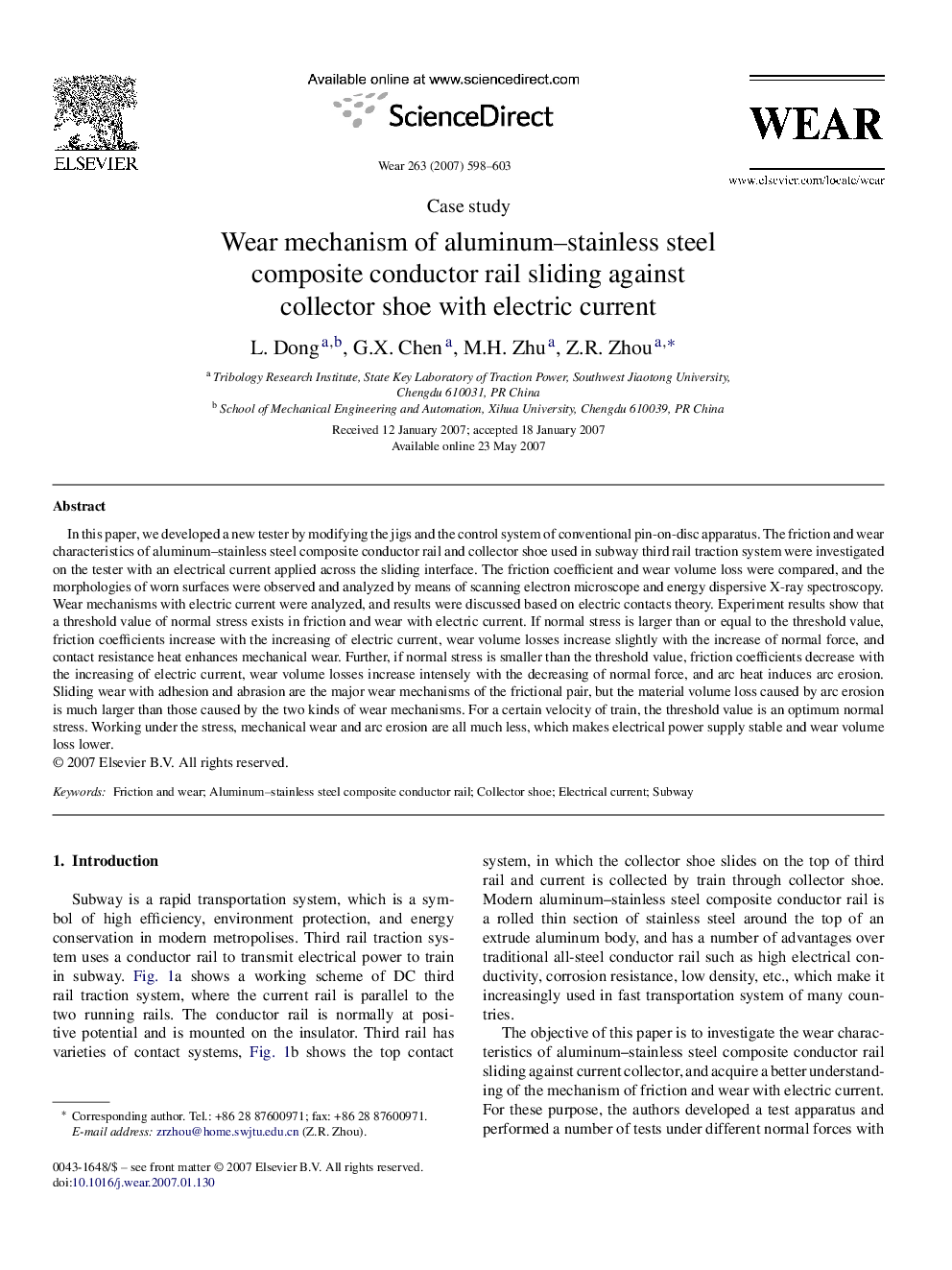| کد مقاله | کد نشریه | سال انتشار | مقاله انگلیسی | نسخه تمام متن |
|---|---|---|---|---|
| 619865 | 1455064 | 2007 | 6 صفحه PDF | دانلود رایگان |

In this paper, we developed a new tester by modifying the jigs and the control system of conventional pin-on-disc apparatus. The friction and wear characteristics of aluminum–stainless steel composite conductor rail and collector shoe used in subway third rail traction system were investigated on the tester with an electrical current applied across the sliding interface. The friction coefficient and wear volume loss were compared, and the morphologies of worn surfaces were observed and analyzed by means of scanning electron microscope and energy dispersive X-ray spectroscopy. Wear mechanisms with electric current were analyzed, and results were discussed based on electric contacts theory. Experiment results show that a threshold value of normal stress exists in friction and wear with electric current. If normal stress is larger than or equal to the threshold value, friction coefficients increase with the increasing of electric current, wear volume losses increase slightly with the increase of normal force, and contact resistance heat enhances mechanical wear. Further, if normal stress is smaller than the threshold value, friction coefficients decrease with the increasing of electric current, wear volume losses increase intensely with the decreasing of normal force, and arc heat induces arc erosion. Sliding wear with adhesion and abrasion are the major wear mechanisms of the frictional pair, but the material volume loss caused by arc erosion is much larger than those caused by the two kinds of wear mechanisms. For a certain velocity of train, the threshold value is an optimum normal stress. Working under the stress, mechanical wear and arc erosion are all much less, which makes electrical power supply stable and wear volume loss lower.
Journal: Wear - Volume 263, Issues 1–6, 10 September 2007, Pages 598–603